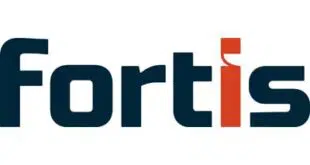Mastercard Inc. saw overall payment volumes inch up in the final quarter of 2020, buoyed by rising debit card volumes and such factors as federal stimulus payments in the U.S. market, the card network’s top executives reported Thursday. Looking ahead, the arrival of vaccines to combat the coronavirus pandemic will spur a rebound in consumer travel, company officials told equity analysts during a wide-ranging call to discuss the company’s quarterly results.
“Distributing vaccines will dictate when distancing can be relaxed and that will drive further recovery,” chief executive Michael Miebach said in the call. “We continue to believe travel will continue to improve, starting with consumer travel.” Approximately 7% of the U.S. population has received at least an initial dose of vaccine so far, according to the Web site ourworldindata.org.
“The [vaccine] rollout is still a little uncertain,” noted Sachin Mehra, chief financial officer. “We’ll see how it all shakes out. Longer term, we feel very encouraged about it.”

Behind the uptick in the quarter was spending on debit cards, as Mastercard recorded a nearly 15% year-over-year rise in the category in the United States, to $291 billion. At the same time, however, credit card volume sank almost 7% to $237 billion. For the rest of the world, slipping credit card volume more than offset an increase in debit card spending, leading to a flat $1.22 trillion in volume. Debit usage is rising, Miebach said, because “people want to spend the money they have” rather than take on additional debt in the face of the pandemic’s uncertainties.
Miebach also pointed to Mastercard’s venture in open banking as another source of optimism for the near term. The company last fall closed on its $825-million acquisition of data networking firm Finicity Corp., a key component of its open-banking strategy. Finicity’s technology enables fintech companies to connect customers’ account to their bank accounts for such functions as funds verification. “We can initiate payments via open banking, and we can also verify assets,” Miebach said. “The fact that we have a strong position in both gives us leverage. I see it as an additional leg in our multi-rail strategy.”
Another potential source of payments volume lies in cryptocurrency, a business Mastercard has entered with such arrangements as a Mastercard-branded multicurrency card issued by Wirex Ltd., a London-based digital-payments platform. Now, Miebach said, Mastercard is talking to “governments all over the world” regarding the potential in central bank digital currencies. “Today, we carry only fiat currencies in our network,” he said, adding that, when markets are ready, “we’ll carry digital currencies in our network.”
For the quarter, Mastercard recorded $4.12 billion in net revenue overall, down 7% year-over-year. With restrictions on travel, revenue from cross-border fees slid fully 40% to $867 million, but transaction processing, the company’s largest revenue source, enjoyed a 5% increase, to $2.38 billion.





